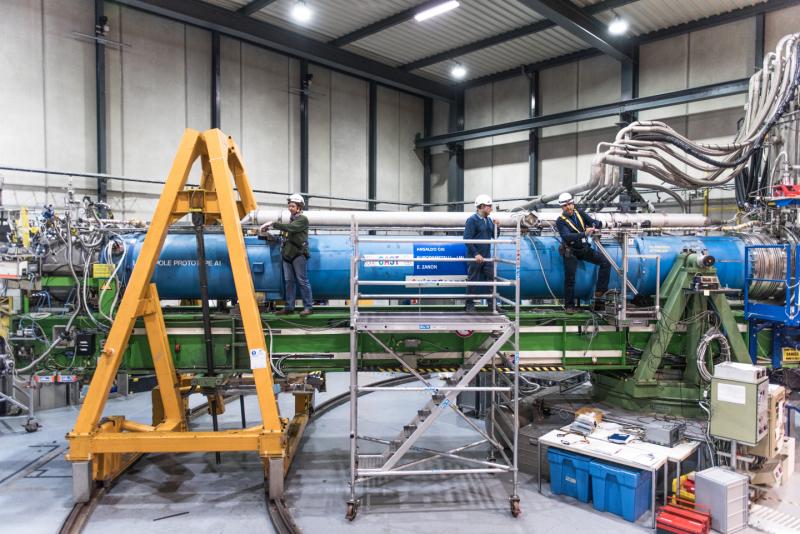Over the next 10 days, CERN's Axion Solar Telescope (CAST) will receive the Sun's rays. The Sun's course is visible from the window in the CAST experimental hall just twice a year, in March and September. The scientists will take advantage of these few days to improve the alignment of the detector with respect to the position of the Sun to within a thousandth of a radian.
Outside of this alignment operation, CAST tracks the Sun but does not see it. The astroparticle experiment is searching for solar axions, hypothetical particles that are thought to interact so weakly with ordinary matter that they pass through walls unimpeded. It is in order to catch these elusive particles that the CAST detector tracks the movement of the Sun for an hour and a half at dawn and an hour and a half at dusk.
Axions were postulated to solve the problem of a discrepancy between the theory of the infinitely small and what is actually observed. They were named after a brand of washing powder because their existence may allow the theory to be “cleaned up”. If they exist, axions could also be good candidates for the universe’s dark matter. Dark matter is thought to represent 80% of the matter of the universe, but its nature remains unknown.
After 12 years of research, CAST has not (yet) detected solar axions, but has established the most restrictive limit on their interaction strength. The experiment has therefore become a global reference on the subject.

For two years, the collaboration, which involves around 70 researchers from 20 or so institutes, has also been searching for another type of hypothetical particle: chameleons. These were postulated to solve the problem of dark energy. Dark energy, which, as its name suggests, remains mysterious and undetectable, is thought to represent around 70% of the universe's energy and to cause the acceleration of the expansion observed in the cosmos. Theories have postulated that this dark energy may be due to a fifth force and that chameleon particles could prove the existence of this force. They were named after the reptile because they are thought to interact differently according to the density of material encountered.
If chameleons exist, they could, like axions, be also produced by the Sun and be detected by CAST. The collaboration has therefore installed two new detectors at the end of its magnet. It is also preparing to install an innovative sensor with an ultra-thin membrane, capable of detecting a displacement of around 10-15 metres – the size of the nucleus of an atom!
More information in the CERN Bulletin article.
